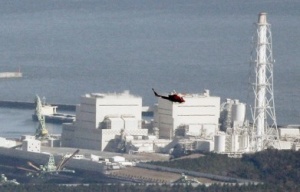Japan dealt blow by second explosion at nuclear plant

Rescuers in Japan are struggling to maintain the impact of a second nuclear explosion which has rocked the country in the aftermath of a tsunami on Friday.
An explosion was reported at Reactor 3 at the Fukushima Daiichi nuclear power plant two days after an explosion in Reactor 1.
There are also growing fears of a meltdown in Reactor 2, with technicians frantically injecting more water after its fuel rods became almost fully exposed.
An exclusion zone is now being established around the site, with 11 injuries reported following the incident.
Authorities were attempting to downplay the significance of the explosions, which was attributed to hydrogen build-up at the reactor.
The developments comes as the country battles to recover from the impact of an earthquake and resultant tsunami on Friday.
Japanese authorities have so far confirmed 1,597 deaths, but the final toll is expected to be much higher.
Two thousand bodies have been found on the shores of Miyagi prefecture alone, with some reports suggesting upward to 20,000 people have been killed across the country.
Japanese prime minister, Naoto Kan, said earlier the situation at the nuclear plant was alarming, and the earthquake had thrown Japan into “the most severe crisis since World War II”.
Tourists in Japan
Natira International Airport has returned to operation, with flights departing as scheduled.
However, many nations have advised citizens to avoid travel to areas of Japan at present, with further aftershocks expected.
The British Foreign Office advised “against all non essential travel to Tokyo and north eastern Japan” given the damage caused by earthquake.
Officials at the Japanese Meteorological Association (JMA) announced yesterday there is a 70 per cent chance of a quake of magnitude 7.0 or greater in the region within the next three days.
This may trigger another tsunami and aftershocks of more than magnitude 6.0, warned JAM, with Japanese authorities subsequently issuing a warning to stay away from low-lying coastal areas.
In China the National Tourism Administration (NTA) suggested tourists to avoid visiting Fukushima and Sendai - where quake damages are most severe.

